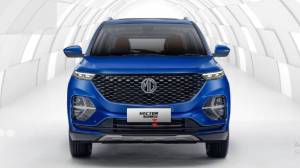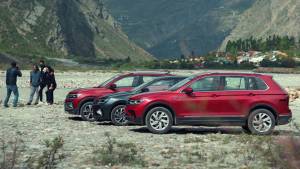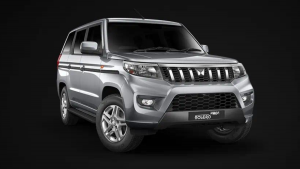2020 MG Hector Plus road test review
"Why is this car not a 7-seater?" It's the first thought that struck us when we saw the MG Hector in the metal last year. Especially considering that the Baojun 530 on which it's heavily based, does come in both 5- and 7-seater versions in select markets. Well, MG Motors has split the difference, and given us the Hector Plus 6-seater. With everything else, including petrol, petrol-hybrid and diesel powertrains remaining the same, the Plus brings with it the more premium-feeling setup of pair of captain seats in the second row, and seating for two in the third row. It's that more premium theme that sets the tone for the rest of the SUV, as we'll soon see.

What's changed?
A fair bit, to help the Hector Plus differentiate itself, and it looks far more polished as a result. Head on, the Plus looks bigger too, thanks to the larger front grille that's grown to accommodate the space left behind by removing the grille outline (silver or chrome depending on variant) that's on the regular Hector. The Plus shows a 65mm increase in length, with the rest of its dimensions, even its 2,750mm wheelbase remaining the same. The increase in length is down to the reprofiled bumpers front and rear, which have much less fussy styling this time around.
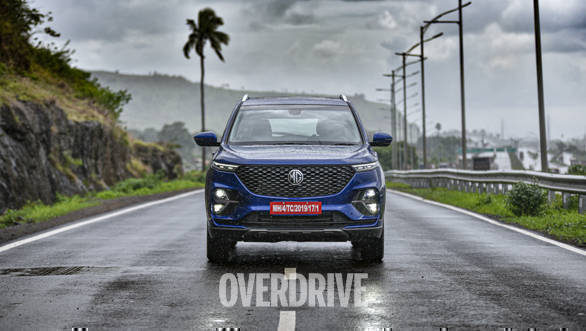
Depending on your tastes, you'll either appreciate or bemoan the restraint shown in appointing chrome trim around the Hector Plus. We believe the Plus looks far more sophisticated without the excessive brightwork; more German, less Robocop. The more sophisticated look continues out rear, with redesigned tail light elements and a neater tailgate, the only sheet metal that's been tweaked on the Plus. Now, the leading edge converges at the MG badge, while the rear bumpers with their exhaust cutouts looks better integrated.
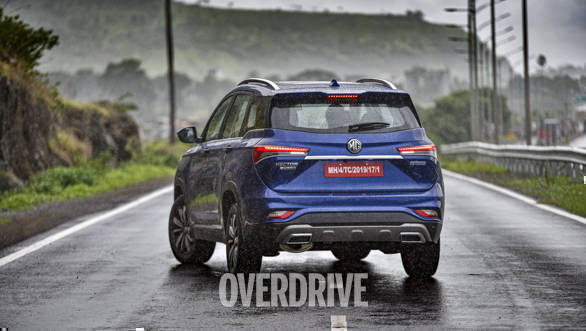
You can still see the muffler and exhaust pipe poking it from under it though, which is confusing, to say the least. We do wish MG had taken this opportunity to go the whole hog and try a set of 18-inch wheels on the Plus to even out the 'larger' look.
What about the cabin?
There's no denying the universal appeal of dark/tan interiors, with the rich brown leather trim and upholstery uplifting the cabin's ambience, and really drawing your attention to the swathes of leather on the dashboard. Everything else remains the same as we remember it from the Hector, highs and lows combined.
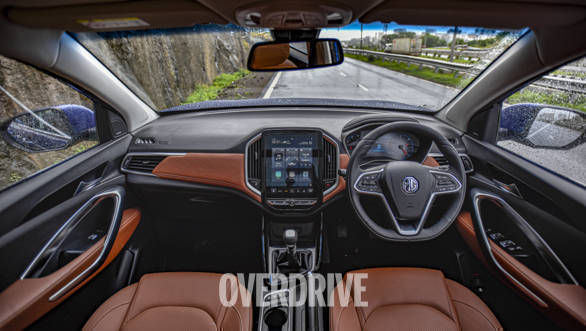
So, while the digital instrumentation looks good, the rev counter still reads revs with an opposite sweep, and the MID still doesn't display average fuel consumption in kmpl, and most importantly, we still miss physical climate controls under that huge vertical touchscreen, even with improved voice-control functionality. But you probably already know this.
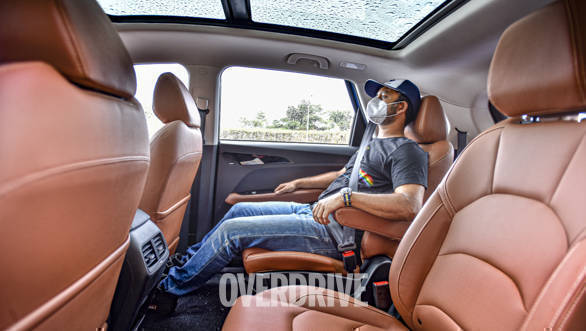
The focus is on what's behind the first row of seats. Which is a pair of captain seats that are identical to the front seats, with the added comfort of padded flip-down armrests. With a large range of adjustment, great space and brilliant under-thigh support, you can really sprawl out back there and enjoy the view out the large panoramic sunroof.
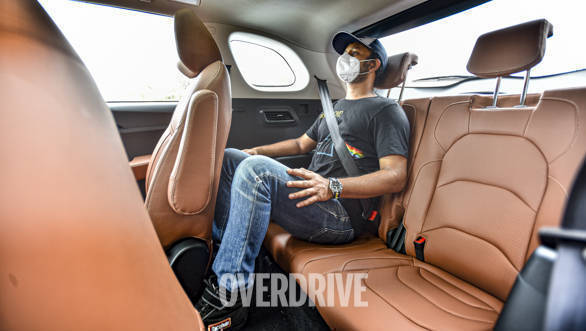
People assigned to sit in the third row might not be as relaxed, unless they're kids. The only way to get in and out of those seats is between the two captain seats, which don't fold forward enough to let you through the side. With the seats just a few inches off the floor, you're sat pretty knees up, with legroom being adequate if a compromise is reached with the second-row passengers. But the real saving grace is a large seat back, which is longer than what we remember in rival 7-seaters. Occupants here do get their own AC blower controls (vents placed at chest height), cupholders and charging port. Luggage capacity with all three rows up stands at 155-litres, or about half that in an Innova Crysta, while flipping the third row against the floor takes it up to 530-litres, down from the regular Hector's 587-litres.
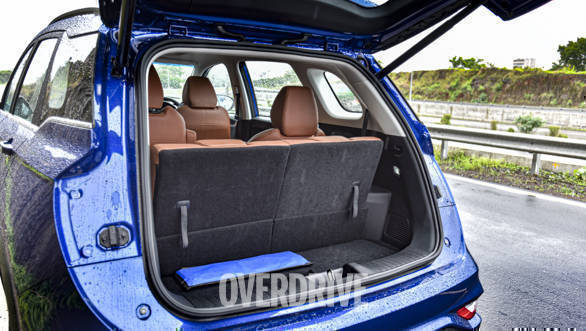
How does it drive?
Being mechanically identical to the Hector, you have the same three powertrains on offer. A 1.5-litre turbo petrol with a 6-speed manual or 7-speed DCT, a 1.5-litre petrol mild hybrid with a 6-speed manual, and the 2-litre diesel engine with a 6-speed manual. We've driven all the variants of the Hector before, with the common praise being high levels of refinement, but the performance numbers for the Plus petrol-hybrid manual we had on test are quite surprising.
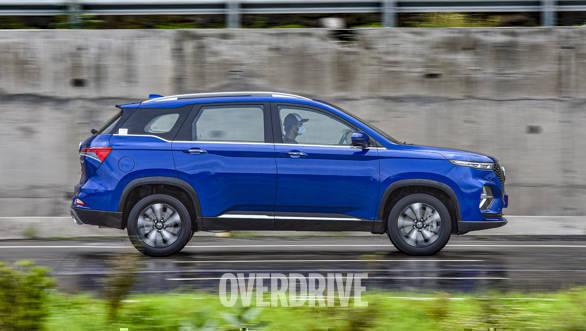
For an SUV of its size and weight (Plus about 12kg heavier than Hector due to third row) powered by a 1.5-litre motor, the Plus manages the 0-100kmph run in a respectable 11.9s. For reference, the petrol auto does the same in 14.3s, while the diesel manages it in 11.6s. Even in our roll-on testing for example, the Plus managed the 30-50kmph pull in third gear in 4.6s, which is about a second off the diesel's pace, lengthening to 8.9s in the more tasking 60-80kmph in fifth test, where the diesel's torque no doubt helps it post a 5s flat timing. The petrol auto does the best here, with its kickdown figures being between 2-5s quicker than the manual.
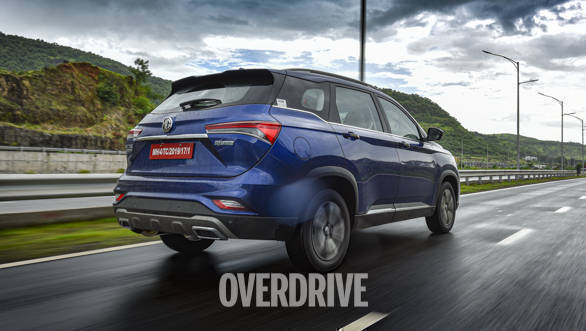
In everyday driving, you don't really miss the extra go from the diesel. Keeping up with traffic will have you timing shifts well below the 2,500rpm mark, but the relatively short gearing does have you reach for a shift quite often. On the highway at 120kmph in sixth, the engine's at a heady 2,800rpm, which leads to a 14.5kmpl figure, which drops to 9.9kmpl in the city.
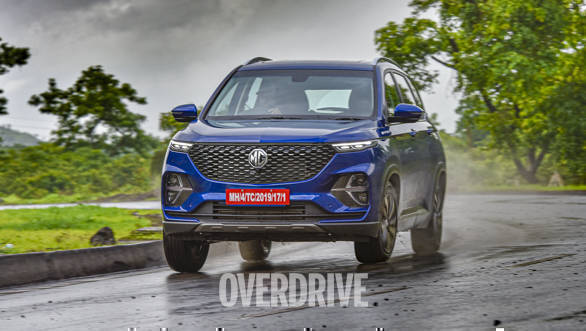
Fortunately, the general lightness of the clutch action and gear shifts make you feel like you're piloting a smaller car, a trait that the light steering adds on. It's perfect for city conditions but we still wish it weighed up a bit more on the highway. As for the ride and handling, it's as we remember it a comfortable, even ride with good body control, and a lot of tyre sidewall flex adding to the sensation of the body leaning into a corner. The ride quality from the second row is similarly impressive, especially with the Plus managing to even out most road irregularities that would otherwise cause excessive body movements. One point to note would be the eagerness of the ABS to jump into action on a really wet road. The Plus came to a halt from 100kmph (in the wet) in 45.7m and 3.4s, which is a couple of metres longer than the regular Hector which we also tested in wet conditions.
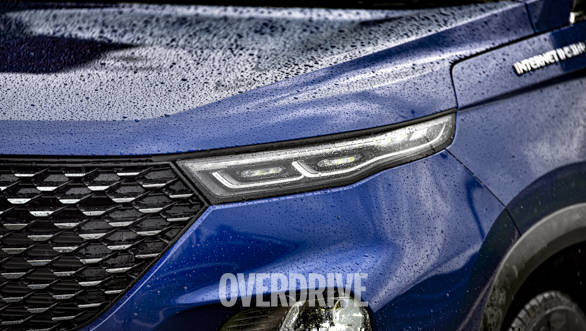
Verdict
The Hector Plus feels closer to the level of polish and finesse that we hoped the Hector had from day one, so in itself is an improvement on the Hector, especially in the looks and finish department. As for whether its captain seats will sway buyers from rivals like the Toyota Innova Crysta, at a price starting at Rs 13.49 lakh (ex-showroom) it's a convincing buy for someone looking for individual seats in the second row and acres of space. It's got great second row comfort, but the reduced luggage carrying capacity with all three rows in use could limit its potential market.
Watch our video review of the MG Hector Plus 6-seater here:
Starts Rs 12.9 Lakhs
1496cc
Manual
143
250
15.8 Kmpl
-NA-
1451cc
Manual
-NA-
250
-NA-
Starts Rs 16.26 Lakhs
2393cc
Automatic
150
360
-NA-


